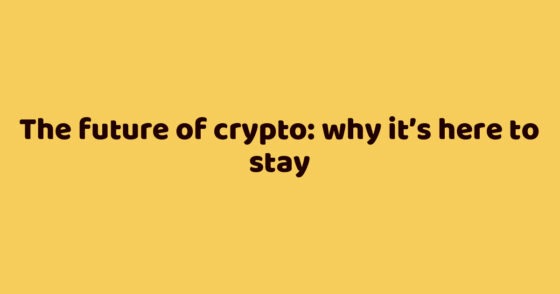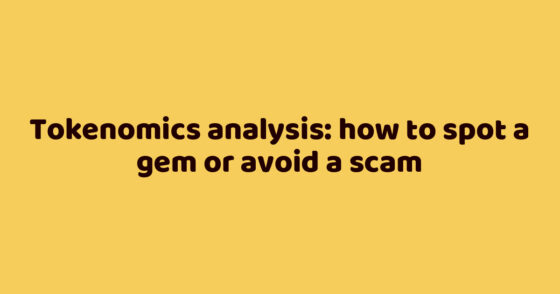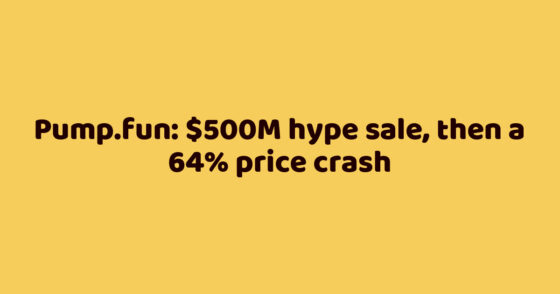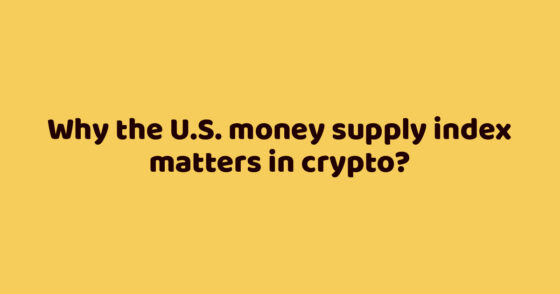In December 2024, after a rebranding, the main network of Sonic, an EVM-compliant Layer 1 (L1) blockchain, was launched. The new direction of the old Fantom project was led by the “father of DeFi” André Cronje.
In February 2025, attention to the Sonic ecosystem and token has grown significantly. There are several reasons for this: user interest in the future airdrop, the network’s competitive performance, and management’s promise to bring back the era of the “DeFi summer”.
We take a look back at Cronje’s journey and contributions to the industry, as well as a look at Sonic’s technology, incentive program, and ecosystem.
DeFi’s father’s workshop
“I agree: even if our technology is excellent, it doesn’t mean much by itself these days – it’s the distribution and usability that matters. That’s what we’re focusing on by creating a horizontal, componentized DeFi stack in all our projects,” wrote Yearn Finance creator and Sonic chief architect Andre Cronje in X.
This was in response to an investor nicknamed “kook” who claimed that in today’s crypto industry, technology has become just a means to promote a product.
Cronje is known for his straightforwardness. From the beginning of his work in the cryptocurrency industry, he has criticized its negative aspects – an abundance of misinformation, a race to hype, and a toxic community. Recognizing these problems has not stopped him from remaining a blockchain enthusiast.
A lawyer by training, Cronje graduated from Stellenbosch University in South Africa. He continued his studies there at the private Institute for Computer Science Education, where he later taught himself.
Between 2006 and 2018, Cronje held positions ranging from programmer to CTO in a number of South African IT companies. He then took his first steps into the digital asset market, working as a code analyst on various ICOs for the CryptoBriefing portal, and later as an advisor to a number of venture capital funds and crypto startups: Wanchain, Fusion and Fantom.
Cronje’s real popularity and status as the “father of DeFi” was brought by the Yearn Finance protocol. Released in 2020, the yield aggregator used vaults – vaults that automatically distributed deposited stablecoins between lending services, offering users passive income with a relatively high APY.
According to its creator, Yearn cost $42,000 to launch and twice that much to audit and host. Cronje had to take out a home equity loan and raise an additional $20,000.
Shortly after launch, the project was hacked, but survived the attack (all of the DeFi architect’s subsequent startups also attracted hackers like a magnet).
The release of the token in June 2020 marked a new round in Yearn’s development. At the time, Cronje made a surprising statement:
“We have released YFI: a completely useless token, backed by nothing. We repeat: it has no financial value. No pre-mining, no ICO, you can’t buy it, it won’t be on Uniswap, it won’t be traded. We don’t have these tokens either”.
Whether those words were sincere or a clever manipulation, YFI rose 35,000% from $3 in the week after it began trading on Balancer. The asset appeared on Uniswap, among others, and soon broke the record among altcoins, reaching ~$77,000 at its peak. As of February 26, 2025, the value of YFI is ~$5,700.
At this point, Cronje succeeded in setting the stage for the further development of decentralized finance. Despite frequent criticism of him – and his own harsh remarks about the industry – he built effective mechanisms that were trusted.
In 2022, however, Cronje announced that DeFi would inevitably be subject to regulation and that he himself would be leaving the industry. To many decentralization enthusiasts, these words sounded like a betrayal.
For two years, the “father of DeFi” disappeared from the public eye, appearing in the news only a few times during that time. Finally, in early 2025, Cronje, already Sonic’s chief DeFi architect, revealed the “real reason” for his disappearance. Since 2021, the SEC had been actively targeting him. First, it requested information about Yearn Finance’s investors and beneficiaries, and then there was already talk of investigations against Cronje.
“After two years of dealing with this every month, endless sleepless nights and stress, I decided to [officially leave the industry]. I’m sure a lot of people here would say I shouldn’t have given up, but I also believe that anyone who says that has never been in a similar situation. You get all the negativity, but you don’t get any benefits,” he admitted.
In the same publication, Cronje reiterated his loyalty to DeFi and said his comments about the need for regulation had been misconstrued.
“I just couldn’t be public, but I’ve been working tirelessly all these years, which is why I’m finally close to releasing my new primitives. [My last posts before I ‘disappeared’ were about regulated DeFi. Most people didn’t even read those articles, they just saw the words ‘cryptocurrency regulation’ in the headline and assumed I had become a government agent,” he fumed.
In explaining his 2022 statement, the DeFi architect pointed to a distinction he made at the time: while regulation aimed at decentralized smart contracts is simply not possible in the wild and will only lead to developers being banned from the industry, as in his case, off-chain third parties (exchanges, brokers) can actually be subject to oversight.
Fantom has “hit a technical ceiling”
With the easing of regulatory pressure in the US, and in particular a more lenient attitude towards tokens, experts are pointing to a possible DeFi renaissance. For example, Bernstein analysts expect liquidity to flow from the meme coin sector into decentralized finance, NFT and gaming tokens.
This was a fitting backdrop for the rebranding and technological update of Cronje’s brainchild, Fantom.
Fantom Foundation Ltd. was incorporated in South Korea in early 2018. The project’s founder and CEO is Ahn Byung Ik, known in the country as the creator of the restaurant review app SikSin. Initially, the Fantom Foundation team consisted mainly of South Korean developers, and the initial partnerships were focused on the local food technology industry.
Fantom Foundation then changed its jurisdiction to the Cayman Islands and the management team became international. The CEO and IT director positions were filled by Australian Michael Kong, and the lead DeFi developer was Cronje.
Mainnet was launched in December 2019, and Fantom was ranked among the top 10 projects on TVL in the fall of 2021.
The network is part of a family of blockchains built on the DAG architecture. The DAG-BFT mixed consensus implementation allows parallel processing of transactions with high completion rates and ensures network operability under conditions where up to one-third of nodes are faulty. Similar models are used by the Aptos, Sui, IOTA, and Hedera Hashgraph projects, but Fantom is the first to implement support for DAG-based smart contracts.
Each node stores its own local DAG of event blocks containing transactions. Nodes do not forward blocks to each other to reach consensus, as they do in linear blockchains. Instead, validators periodically exchange transactions and events, synchronizing them within the same epoch.
The team cites the difficulty of making further technical improvements to Fantom as the main reason for launching Sonic. While the announced throughput at launch was around 4,500 TPS and later more real ~2000 TPS, in the case of Sonic they promise up to 10,000 TPS. Transaction completion speed will be less than 1 second at a cost of less than $0.01. Such performance allows it to compete with the new L1s – Monad and Berachain.
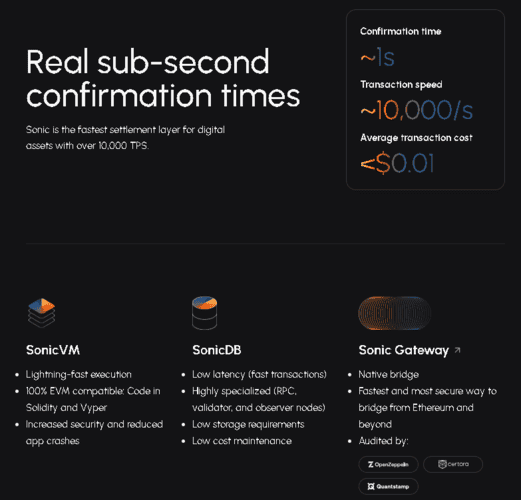
Sonic Labs, which is responsible for the development of Sonic, aims to provide a platform for fast and cost-effective transactions with a focus on DeFi and game mechanics.
The developers of Sonic have envisioned the possibility of combining liquidity with Ethereum. Sonic’s native cross-chain bridge, Sonic Gateway, allows ERC-20 tokens to be transferred between Sonic and the network of the second most capitalized cryptocurrency.
The Gateway includes a fault-tolerance mechanism that protects users’ assets. If the gateway fails, funds can be restored to the Ethereum network after 14 days.

Assets are moved at certain intervals – “clock cycles” – for efficient use of gas: every 10 minutes from Ethereum to Sonic and every hour in the opposite direction. With Fast Lane, you can speed up the transaction at the expense of higher fees.
SonicVM is fully compatible with EVM and allows the use of Solidity and Vyper programming languages.
Another important part of the upgrade was the Carmen solution. This system manages data based on actual network needs, reducing storage requirements for validator nodes from 2,000 GB to 300 GB.
This optimization reduces node operating costs and allows more nodes to participate in network validation. Historical data that is no longer accessed frequently can be compressed or migrated. Carmen also reduces storage requirements for archive nodes from 11TB to less than 1TB.
Stacking, farming, airdrop
According to Andre Cronje, when the missing DeFi mechanics are implemented in Sonic, the network will look “like one big high-frequency trading platform”. The following features and incentives will be implemented
- Fee swapping for app developers at 90%;
- Customization of transaction fees for app owners;
- Free transactions for new users;
- Account abstraction with wallet-less access.
Just the start. Bridge and infra going live over next few days. Then the real fun begins. Will launch my dapps in stages; bringing ICOs, fairlaunches, and retroative airdrops back to show what Sonic can really do. https://t.co/LcbXvbPiEC pic.twitter.com/ZZBDrwULI8
— Andre Cronje (@AndreCronjeTech) December 2, 2024
In a tweet posted on the day of the core network’s launch, Sonic’s CTO said:
“Will be launching my dapps in phases, bringing back ICOs, “fair launches” and retroactive airdrops to show what Sonic is really capable of.”
Many of these elements have already been implemented in Fantom. Back in August 2021, the Fantom Foundation announced the launch of a new rewards program for DeFi developers. In October, it was expanded to include GameFi projects.
Holders of FTM tokens will be able to exchange them for S tokens at a 1:1 ratio upon the launch of the core network.
The growing interest in Future Airdrop, fueled by nostalgia for the “DeFi summer,” has noticeably revitalized the ecosystem. The new Future Rewards campaign implemented a tried-and-true strategy – a focus on DeFi, mini-games, NFT and, of course, meme mania.
The decline of the entire crypto market at the end of February 2025 repeats a familiar scenario from the days of Arbitrum’s airdrop farming in 2023. Back then, DEX tokens, lending platforms and other derivatives of the ecosystem showed strong growth despite volatile market conditions.
According to Sonic’s documentation, ~200 million S will be distributed to those who store and use approved assets in various DeFi applications on Sonic, thereby increasing liquidity.
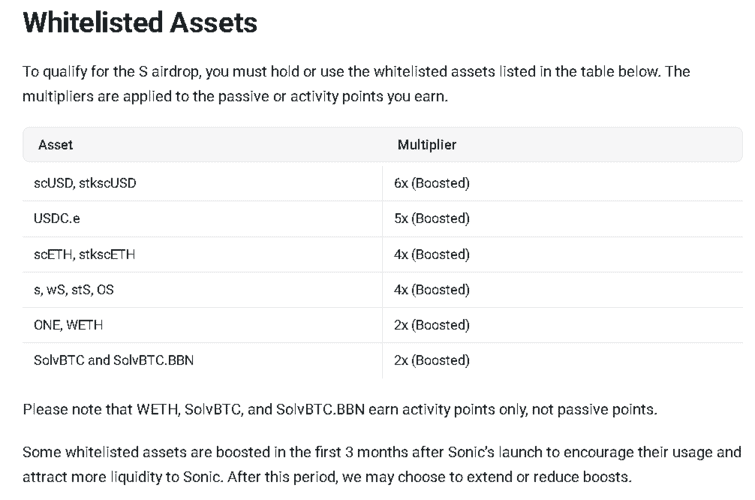
Three main dynamics are envisioned for airdrop pharming:
- Passive actions – holding approved assets;
- Active use of approved tokens in DeFi mechanics;
- Rewarding developers with Sonic Gems.
The Meme Mania contest rewards program will launch on February 7, 2025 and run until March 8. 1 million liquid Origin Sonic (OS) tokens will be distributed to the top 125 holders of the 8 winning Meme Coins as a reward for dedicated community members.
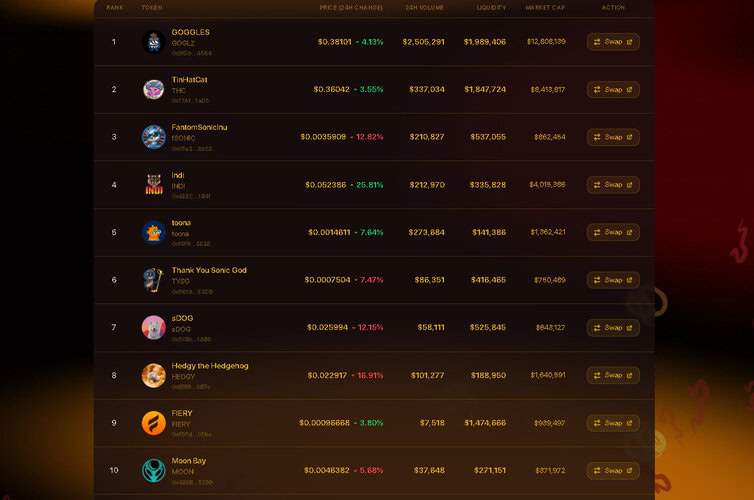
The ecosystem is growing thanks to active community action. The leading shadow exchange DEX showed outstanding price dynamics with a monthly growth rate of ~1400% and TVL close to $140 million.
This is followed by the decentralized trading exchange SwapX with a twofold growth for the month and a TVL of ~45 million.
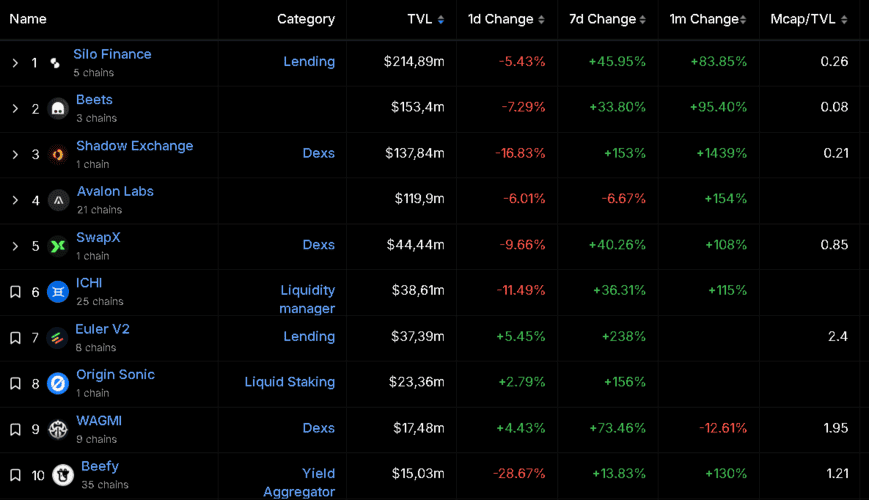
Among derivatives exchanges, Navigator showed the first place in futures trading. According to CoinGecko, the NAVI token grew by ~500% in 30 days.
With the release of new projects like Monad, Berachain and the updated Sonic, the competition in L1 is intensifying. In the rapidly growing variety of blockchain and cryptocurrency applications, each network can carve out its own niche. Sonic’s focus on high speed, low fees and liquidity aggregation strengthens its position in the DeFi segment.
The upcoming summer airdrop will show how the leadership of the revamped blockchain has adapted to the new realities of incentive programs and the balance of tokenomics.
L1 Revival
Sonic is a high-speed, EVM-enabled blockchain that has a track record of building a thriving DeFi ecosystem and now enables parallel execution. Sonic can take on expected startups and over-funded competitors like Berachain, Monad or MegaETH, as well as others already in the market like Hyperliquid’s HyperEVM and Sei v2. Already, most of the $S offering is fully circulating and receiving large inflows of funds, contributing to the rapid growth of TVL and blockchain volume.
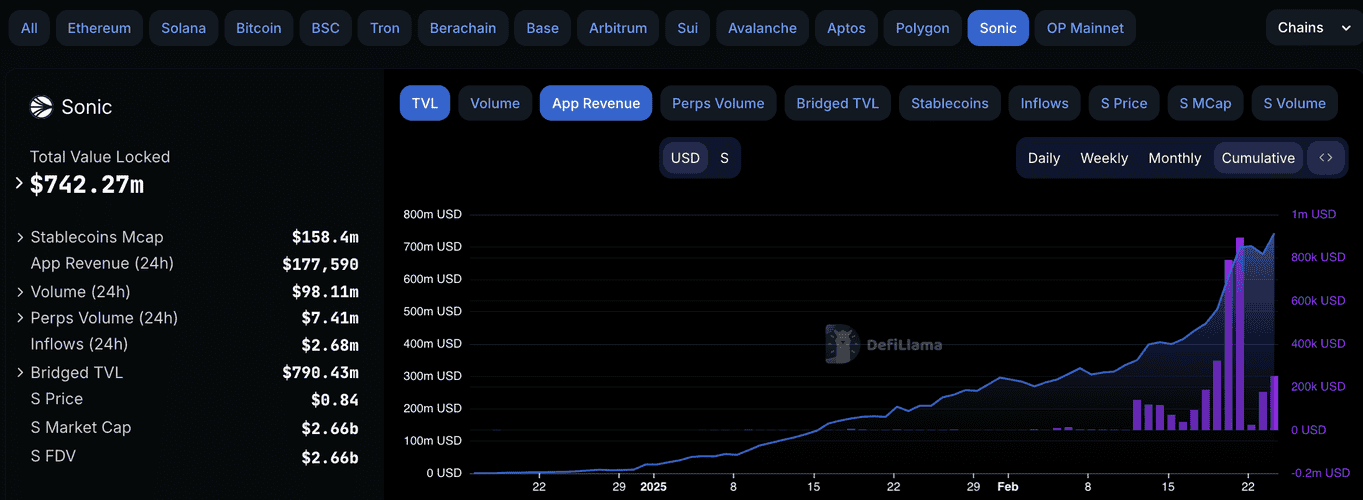
After the rebrand, one of DeFi’s most vibrant communities has come back to life, attracting sophisticated players from the Yield era who made their name in the trenches of Fantom. Avoiding the huge overhang of insider unlocks that new entrants suffer from, Sonic is a liquid opportunity that is easy to control and monitor for execution risk. The recent surge in interest underscores the opportunity to capitalize on this ecosystem, both by generating on-chain returns and by placing a portion of the portfolio to maintain flexibility and gain exposure to future unexpected catalysts initiated by the Sonic Foundation and its teams within the ecosystem.

We are watching this rally closely based on the dynamics of leadership execution and capital rotation until we see signs of churn or attrition. After an initial post-launch sell-off, the market now sees Sonic as a rejuvenated project with serious technicals and growing utilization. The Fantom community has largely recovered and new speculators are joining the wave.
Key Takeaways
- First mover advantage and a live network while competitors are still in a test network or in the early stages of building an ecosystem.
- Clean token structure with ~90% already in circulation, predictable inflation rate for staking rewards, alignment of incentives with developers through the Sonic Gas Fee monetization program, and little future dilution related to insider unlocks (unlike major competitors).
- Strong liquidity profile, ranking in the top 50 by market capitalization and showing high volumes on liquid exchanges such as Binance.
- Charismatic leader and catalyst, led by Andre Cronje, who is introducing new primitives that will only be available on Sonic.
- Immediate competition on the way will test Sonic’s ability to retain liquidity, developers and minds.
- Rotation risk and immediate competition could jeopardize future growth – EVM compatibility means near-zero switching costs for developers and capital.
- Strategic window of opportunity before major competitors emerge – then predicting winners becomes more difficult.
Speed, Liquidity and First Mover Advantage
Sonic’s 720ms finalization puts it among the fastest Layer 1 EVMs, competing with direct competitors on the high-performance EVM parallelization front such as Sei V2, Hyperliquid’s HyperEVM, Monad and MegaETH, as well as other L1s building liquidity moats for DeFi such as Berachain. However, Sonic’s track record and first-mover advantage gives it a critical advantage that opens a window of opportunity in the coming weeks – while competitors are on the test network or building liquidity, Sonic is already up and running and growing. Sustained growth will be key, but the current trajectory suggests that the company will gain a foothold before the next wave of competitors arrives.
One of Sonic’s most unique features is its Gas Fee Monetization program, which redistributes value to dApp developers by rewarding them with up to 90% of the commissions generated by their users. This creates an ecosystem where apps with real-world applications are directly financially incentivized, attracting serious developers who are confident that their products are in demand. While this reduces deflationary pressures by not automatically burning tokens, this model creates a correlation between network expansion and token demand: the more transactions, the greater the need for $S as gas. The bet is that increased activity on the network will offset a decrease in the number of tokens burned, creating a long-term accumulation of value for the asset that will be minimally susceptible to supply dilution in the future, as new tokens are only issued through predictable stacking rewards.
It’s not just blockchain volume and TVL. Developer activity is also increasing thanks to the native integration of USDC (Circle/Wormhole) and Sonic Gateway, an Ethereum bridge with 14-day failure protection that eliminates concerns about unreliable bridging solutions in the past. These updates reduce the risk of DeFi liquidity flows, making Sonic a more attractive settlement layer. It also shows that the team can execute its roadmap almost flawlessly, confronting criticisms and shadows of the past such as the multichain exploit and the lack of native stablecoins on-chain.
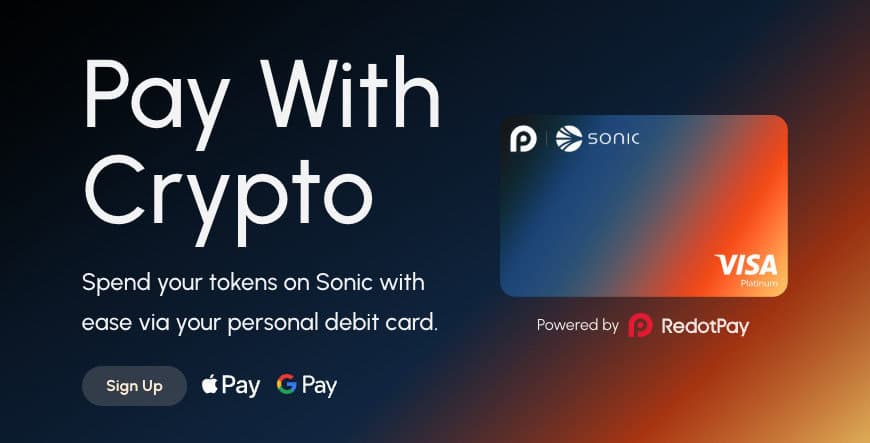
Andre Cronje’s return is a double-edged sword: his leadership and reputation attract developers and liquidity, but Sonic’s success still depends on execution. We expect Andre’s new primitives to reinvigorate the ecosystem and allow new teams to develop. In the short term, this gives the chain some exclusivity, as it will take some time for other EVM ecosystems to fork and copy code elsewhere. Meanwhile, Sonic has a cleaner token structure since its CO, unlike many competitors who are burdened by investor unlocking overhangs.
However, competition will intensify in the coming months as Monad and MegaETH enter the market, which will require constant innovation to protect its position. We maintain a bullish outlook, but will be cautious as new players enter the market. Sonic’s token supply structure presents minimal risk of dilution in the future as approximately 90% of the maximum supply of 3.175 billion is already in circulation. The token remains highly liquid as a top 50 asset by market capitalization, supported by significant daily trading volume. This is a favorable environment for liquid funds to establish a position from which they can easily exit on Binance and other CEXs.
Flexibility and Liquidity in the Competitive EVM Sector
Developers choosing where to deploy face three major trade-offs: General purpose L1/L2 offer embedded infrastructure and composability, but derive most of their value from gas fees, often forcing dominant applications to seek their own blockchain despite high cost and operational complexity. Custom rollups offer greater control, but come with vendor lock-in, costly customization, and fragmented interoperability in ecosystems like OP Stack or Arbitrum Orbit. Sonic introduces a new alternative – an ultra-fast, EVM-equivalent blockchain with up to 90% commission share for dApps, no infrastructure overhead, full compatibility, and support from the likes of Andre Cronje.
Sonic’s greatest strength – its position as a high-speed EVM-compliant L1 with full circular tokenization – is also its greatest challenge. The race to be the fastest and most liquid EVM chain is heating up, with Sei V2, Hyperliquid, Monad, MegaETH and Berachain vying for developers’ minds and liquidity. While Sonic currently has an advantage thanks to a vibrant mainnet, a growing TVL, developer incentives, and Andre Cronje’s credibility, it must maintain momentum in the face of aggressive competition and new incentives that are attracting capital elsewhere. Beyond these chains, we cannot ignore other EVMs in the Ethereum L2 ecosystem (Arbitrum, Optimism, Base, etc.) or other L1s such as Avalanche.
Sei V2 boasts ~28,300 TPS and 390ms finalization due to “optimistic parallelization”, making it one of the most technically impressive contenders. However, it faces implementation hurdles due to its Cosmos roots – Cosmos native projects have historically struggled with low liquidity and fragmented communities. Sonic, with its established EVM base and deeper DeFi penetration, has an advantage here, provided it continues to raise capital and builders before Sei V2 gains traction.

Hyperliquid’s current success story revolves around its use as a trading platform with a UX that rivals CEX, with all the benefits of KYC-free trading, as well as a very generous community allocation and $HYPE airdrop. The team’s experience in high-frequency trading has allowed them to develop an L1 running on a custom HyperBFT consensus, providing 200ms latency and speeds up to 200,000 tps – an order of magnitude beyond Sonic’s goals. A gradual decentralization process is underway, and the focus is now on building an ecosystem on HyperEVM that will enhance the value of Hyperliquid’s offering as the sole infrastructure provider of a highly liquid, vertically integrated exchange and L1. However, this is already built into its valuation – more than 10x that of Sonic. Since $HYPE’s price already reflects premium expectations, one could argue that valuation convexity favors Sonic when it comes to improving returns. Similarly, if HyperEVM disappoints in attracting dApps, it could face a short-term “news selling” event similar to Sonic’s initial drop immediately after launch. The strength of the Hyperliquid community, driven by its founder Jeff, is another wild card: despite strong trader loyalty post-airdrop, Sonic could still differentiate itself by becoming a hub for the new DeFi primitives introduced by Cronje.
Another chain and direct competitor that recently entered the market is Berachain. With its cult audience and proof-of-liquidity model, it proves that community-driven ecosystems can attract billions of TVL before the chain even launches. With $3B+ TVL and 200+ dApps, it is the liquidity leader among emerging EVM chains. However, it is also driven by venture capital backing and future dilution. Sonic, on the other hand, must rely on organic growth of the ecosystem rather than deep venture fund subsidies. The question is whether TVL, fueled by Berachain’s returns, will be sustainable, or whether it will fizzle out when the incentives inevitably diminish. DeFi’s base of Fantom-era veterans and Sonic’s focus on real utility for the token may give it an edge as long as both compete for long-term liquidity and user retention.
Another chain and direct competitor that recently entered the market is Berachain. With its cult audience and proof-of-liquidity model, it proves that community-driven ecosystems can attract billions of TVL before the chain even launches. With $3B+ TVL and 200+ dApps, it is the liquidity leader among emerging EVM chains. However, it is also driven by venture capital backing and future dilution. Sonic, on the other hand, must rely on organic growth of the ecosystem rather than deep venture fund subsidies. The question is whether TVL, fueled by Berachain’s returns, will be sustainable, or whether it will fizzle out when the incentives inevitably diminish. DeFi’s base of Fantom-era veterans and Sonic’s focus on real utility for the token may give it an edge as long as both compete for long-term liquidity and user retention.
Ironically, the main project that started the “high performance parallel EVM meta”, Monad, is still in testnet (only recently launched, and it will be a while before they are up and running and dApps can be deployed on the chain). With 10,000 tps and 1s time-to-finality, it is Sonic’s most direct L1 competitor. As with Berachain, Sonic has the advantage of optionality and lack of dilution. Monad’s model, largely backed by venture capital funds, means that future token unlocks will put pressure on sales, something $S does not have. Similarly, we retain more flexibility with $S, as we can freely enter and exit positions in a liquid market to adjust exposure based on $BTC movements and other potential macro risks and issues. So while Monad remains on the test network, Sonic is already in active DeFi implementation mode. One could also take advantage of tactical pair trading if $MON drops at launch and there is a chance to take advantage of the initial low float. However, the market’s propensity to chase the “shiny new thing” could challenge Sonic’s leadership if the company doesn’t continue to be aggressive. It’s important to keep an eye on this to avoid falling into a trap – the idea is to get ahead of the capital rotation, not fall behind as competition intensifies and predicting winners becomes more difficult.
The space is becoming even more competitive as L2s like MegaETH enter the race, which also remains a structural threat to Sonic’s positioning. With block times of 1-10ms and TPS of 100,000+, it leverages Ethereum’s security and liquidity, giving Ethereum-based projects a reason to stay in its ecosystem rather than migrate to the new L1. MegaETH is also developing a number of MegaETH-only projects that won’t be available on other EVMs, as they seek to capitalize on the blockchain’s real-time processing capabilities. On this issue, Cronje openly favors a single, fast L1 over disparate L2s, and a single Sonic application environment with native stimuli is his counter-strategy. The question is whether Sonic can convince developers that a single L1 offers more long-term value than the ultra-fast Ethereum rollup.
There are still a lot of unknowns, but there’s also an opportunity to turn that uncertainty to our advantage. Although Sonic has experienced a “news selloff” since the rebranding, sentiment is rebounding as TVL continues its upward trajectory. If Sonic can sustain TVL’s growth as incentives normalize, it will signal the company’s true resilience and reduce its reliance on short-term cash infusions. The next 3-6 months will be critical – Sonic must continue to work to strengthen its market position before competitors like Monad and MegaETH fully enter the market. In the meantime, any signs of TVL erosion could spell trouble, as miners are quick to move capital to new networks when rewards dry up.
Last Bullet: Dilemmas and changes in value accumulation
Sonic $S, formerly $FTM, has undergone a 1:1 token migration and has a fixed maximum supply of 3.175 billion tokens, of which about 90% are already in circulation. Unlike many competing L1s, which still have years of unlocking for early investors and team allocations, Sonic’s remaining supply is almost entirely staking rewards. By the end of 2025, token issuance will be minimal, alleviating concerns about dilution. This is one of Sonic’s greatest strengths: there’s no big VC overhang or looming supply cliffs – what’s circulating today is essentially what the market has to work with.
That could be a tipping point if there’s no room for big incentive programs. Many networks are fueling their growth with aggressive token issuance, but Sonic is close to full circulation. If this is the final solution for incentives, the ecosystem will now have to rely on organic growth to sustain itself. This will put pressure on Sonic’s ability to incentivize real adoption and activity on the blockchain, rather than relying on an artificial bootstrap. However, the current airdrop program allocates an additional 6% of the 3.175 billion to be minted and distributed six months after launch. After that, 47,625,000 tokens can be minted annually for 6 years to grow the team responsible for implementation, onboarding and active marketing campaigns. To protect against inflation, all unused tokens will be burned, ensuring that 100% of all new tokens minted under this initiative will be used to grow the network, rather than sitting in the treasury for future use.
There is also the Sonic Labs Innovator Fund, which allocates up to $200 million to accelerate application adoption and support new ventures with a focus on infrastructure, compliance, cross-chain technologies and strategic partnerships. It is backed by leading industry investors and VCs including Mikhail Egorov (Curve), Stani Kulechov (Aave), Robert Leshner (Compound), Tarun Chitra (Gauntlet) and Sam Kazemian (FRAX), as well as venture partners including Hashed, Signum Capital and UOB Venture Management.
A key factor in Sonic’s tokenization is its fee distribution model. Initially, 20% of transaction fees were burned, creating a direct correlation between network usage and token scarcity. However, thanks to the gas monetization program, up to 90% of fees can now be redirected to dApp developers. While this rewards developers and incentivizes app growth, it also reduces direct value accrual for passive token holders. Rather than aggressively burning supply, Sonic’s model redistributes value to developers in hopes of increasing adoption.

What this means for investors is that $S is not a purely deflationary asset like ETH after EIP-1559. Instead, its success is directly tied to transaction volume and dApp utilization. If Sonic attracts high-quality applications that generate sustainable gas demand, this model could lead to strong network effects and long-term price appreciation. However, if adoption falters, the token has no built-in mechanism to maintain value solely by reducing supply.
Despite this, Sonic uses three key burn mechanisms to offset inflation and increase the value of the token over time. First, Fee Monetization Burn permanently removes 50% of gas fees from transactions in dApps that do not participate in the developer reward program. Second, Airdrop Burn reduces the amount of circulating supply when users choose to airdrop early and lose a portion of their tokens. Third, Ongoing Funding Burn ensures that all of the 47.6 million $S tokens allocated annually for growth but not used are automatically burned rather than saved. These mechanisms help offset issuance, creating a deflationary effect that strengthens the long-term supply dynamics of $S.
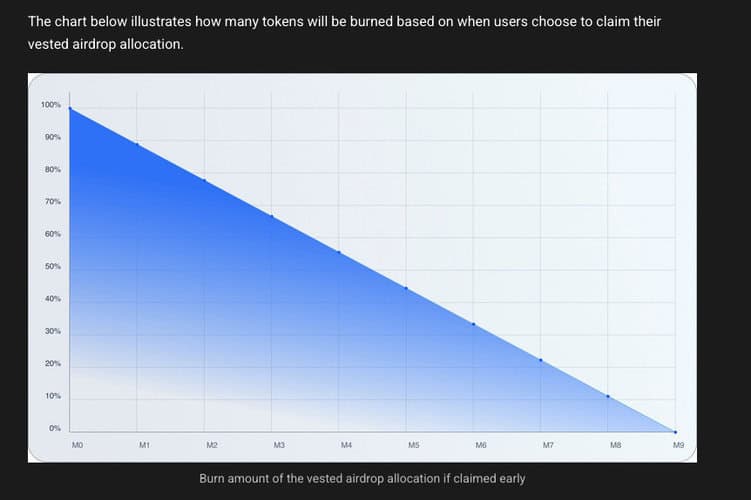
Another optimistic note is that Sonic is not only inheriting Fantom’s existing ecosystem, but also expanding it with new projects attracted to its improved execution model. The upcoming release of Andre’s new primitives could prove inspiring and unleash new innovations based on his designs. The rebranding has now reinvigorated developer interest and capital inflows, making Sonic an increasingly attractive base for DeFi innovation. We believe the momentum can continue without another large L1 issue. Most funds distribute incentives and grants to incentivize builders, but Sonic already has such incentives built in at the blockchain level through its gas monetization program. As more projects enter the ecosystem, each with their own token, this is already creating revenue opportunities that don’t necessarily require excessive issuance at the L1 token level.
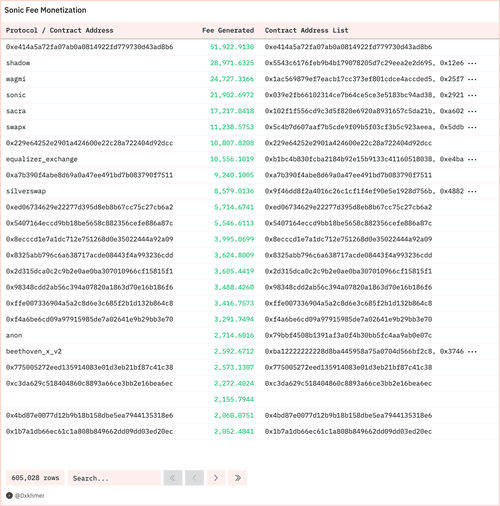
Ultimately, the $S purchase is a bet on ecosystem growth, not a token shortage caused by tokenomics. The almost complete reversal of supply eliminates the major risks of anlocks, but now Sonic must prove it can provide sustainable usage to attract developers. Success will depend on whether developers stay, liquidity remains, and Sonic can maintain its competitive position in the increasingly crowded market for high-performance EVMs.
Return-seeking sentiment and fleeting loyalty
The L1 premium that once existed is no longer a given. Especially if you are an EVM compliant blockchain. “Ethereum, but cheaper and faster” is no longer a USP. New chains, whether L1, Appchains or L2, now have to fight to justify their valuation. Sonic’s main challenge is to maintain liquidity and attract developers to create a sustainable ecosystem: the cost of moving code from one EVM to another is very low, and bridging assets now requires little effort on the part of the end user.
Currently, the main risk is Sonic’s reliance on DeFi revenues to sustain sentiment. Consider, for example, how some networks, such as Berachain, have built their entire model around liquidity. If users find higher risk-adjusted returns elsewhere, Sonic may struggle to maintain inflows. The ease of switching between EVM-compliant chains allows users and builders to effortlessly search for the next best incentive structure. Many of the builders who backed Fantom in 2021 have switched to Ethereum L2s – there’s no guarantee they won’t do the same if incentives weaken.
Many are also concerned about the risk associated with the charismatic figure of Cronje. While Sonic now has a more structured management team (Sonic Labs, Sonic Foundation), the market still sees Cronje as a key figure. There are currently high expectations for his new projects, but failure to meet these expectations could lead to disappointment.
The main concern, however, is that Sonic risks becoming obsolete in the rapidly changing narrative cycle of cryptocurrencies. Right now, Sonic has a first-mover advantage in the high-performance EVM category, but networks like Monad and MegaETH are about to enter the market with huge incentives and high-profile technology announcements. As the broader market shifts its focus, Sonic could quickly become yesterday’s news. This is especially dangerous in a space where hype and liquidity are aggressive.
Many are also concerned about the risk associated with the charismatic figure of Cronje. While Sonic now has a more structured management team (Sonic Labs, Sonic Foundation), the market still sees Cronje as a key figure. Expectations are currently high for his new projects, but failure to deliver could lead to disappointment.
The main concern, however, is that Sonic risks becoming obsolete in the rapidly changing narrative cycle of cryptocurrencies. Right now, Sonic has a first-mover advantage in the high-performance EVM category, but networks like Monad and MegaETH are about to enter the market with huge incentives and high-profile technology announcements. As the broader market shifts its focus, Sonic could quickly become yesterday’s news. This is especially dangerous in a space where hype and liquidity are aggressively rotated.
Finally, L1 rotation remains an ongoing risk. Capital and users often chase the highest incentives and fads, and then leave. If Sonic fails to maintain momentum, it could suffer the fate of many past L1s – initial excitement, brief spikes in TVL, and then a gradual decline as liquidity migrates elsewhere. We’ve already seen this on the $FTM chart.
A strong story, but will it last?
Sonic’s price action in early 2025 tells a familiar story: initial excitement, a “sell the news” pullback, and then a strong rebound as sentiment improves. We have seen the same thing in the case of $BERA. Liquidity conditions are favorable – $BERA is in the top 50 by market capitalization, has daily trading volume in the hundreds of millions, and is listed on major exchanges, making it easy to enter and exit positions. This is currently a critical advantage in a market where liquidity dictates opportunity.

Andre Cronje is a two-way stick, but for now we are leaning towards his new primitives acting as a positive catalyst. In the meantime, we will be keeping a close eye on liquidity rotation and expected launches. As such, it’s important to have a clear exit strategy – whether it’s TVL trends, ecosystem adoption or changing sentiment – knowing when to take profits is just as important as entering.
Structurally, the Sonic ecosystem is in an active growth phase, reminiscent of early Fantom, but with a more strategic approach. DeFi’s core infrastructure (DEXs, lending, stablecoins) is up and running and gaining momentum. TVL and trading volume show that liquidity is not just coming in as an incentive – it is being put to real use. Developer activity is high, fueled by a combination of improved technology, financial incentives and Sonic’s rapid execution.
But this is a race, not a guaranteed success. Sonic must compete with Sei, Monad, Hyperliquid and Ethereum’s L2 stack – each offering different innovations and aggressive incentive programs. Burn mechanics and gas incentives help differentiate $S, but ultimately Sonic’s success depends on sustained developer adoption and growing transaction volume.
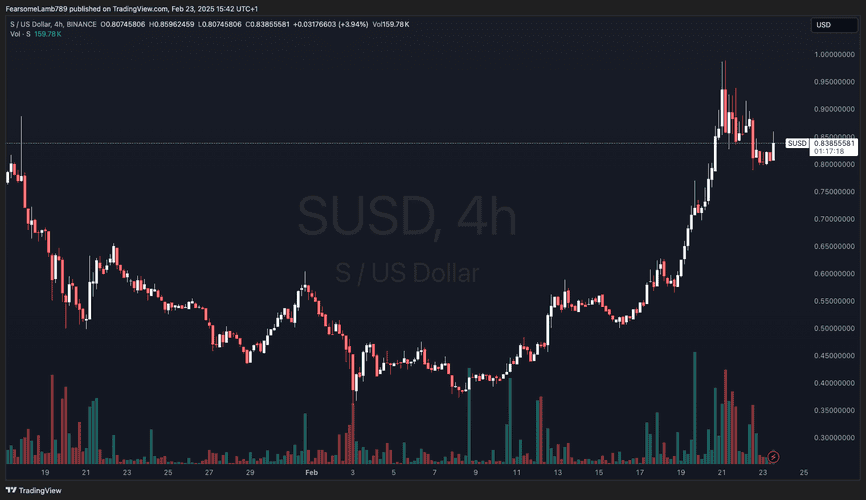
Sonic has momentum – a strong rebrand, the return of Cronje, a growing TVL and deep cash. But competition is relentless and developer loyalty is fragile. It’s a bargain if adoption continues, but watch for signs of attrition – if growth stops or sentiment changes, liquidity will quickly move elsewhere.
Executing this position can either maximize its potential or completely negate it. You do not want to find yourself in a situation where you are chasing green candles, but the recent market strength should not be ignored. It seems reasonable to expect a pullback and a small correction, which will provide an opportunity to enter the market when the mood is warmed up, but not so euphoric. Once in the market, the main thing is to keep an eye on the ecosystem indicators and use any signs of liquidity rotation or TVL erosion as an exit signal. Strength may symbolize confirmation of the thesis, but strength also attracts crowded positions. This is a trader’s market, not a holder’s paradise. Extract your value before the rotation narrative does it for you.

